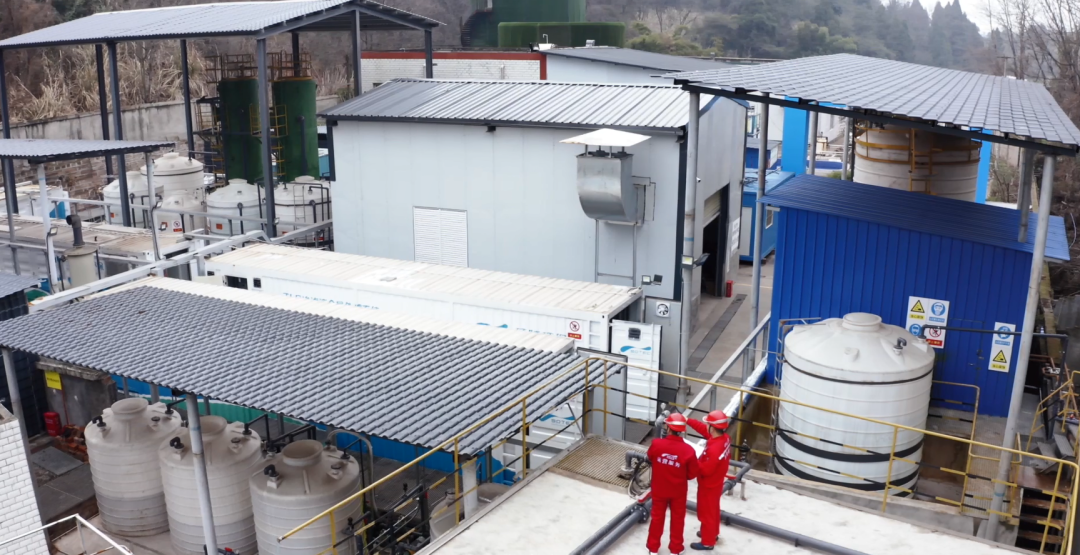Where is the carbon neutral technology path for wastewater treatment?
From: This site Time: 2022.07.25 View:
The goal of achieving carbon neutrality is to reduce the emission of carbon dioxide and balance the emission and absorption of greenhouse gases into the atmosphere. As we all know, sewage organic matter (COD) is actually a kind of energetic material, containing a lot of chemical energy, sewage treatment is to use "energy consumption" way to remove organic matter. In this process, it will consume a large amount of energy, fuel and pharmaceutical resources, and indirectly produce a large amount of carbon dioxide emissions to the atmosphere. To achieve carbon neutrality in the sewage treatment industry is to reduce the consumption of these energy, and even convert organic matter into energy material to be used, so that the energy required for sewage treatment is self-sufficient.
1
First, optimize the process and equipment energy efficiency. The inflow and quality of sewage treatment fluctuate with time and season, so the power equipment such as sewage lifting pump, sludge lifting pump, reflux pump and blower is not always in the best operation state. To this end, it is necessary to take technical measures to eliminate unnecessary energy waste. Ac frequency conversion speed regulation technology can realize precise aeration, reasonable control of return flow, so as to ensure the equipment in efficient operation state, so that the processing process in the best operating condition. However, the premise of using AC frequency conversion speed regulation technology is to timely understand the actual water quality and water quantity change characteristics. In this respect, the on-line monitoring technology of water quality and quantity can play the role of real-time transmission of online information. On-line monitoring instrument can not only interpret the information of water quality and quantity in real time, but also combine with mathematical simulation technology to optimize the process operation, so as to provide the corresponding control parameters such as aeration and return flow under the condition of changing water quantity and water quality in real time, and provide accurate control instructions for frequency conversion speed regulating equipment. In addition, research and development of new aeration equipment is also a technical direction of low carbon sewage operation, the improvement of aeration equipment power efficiency and oxygen transfer efficiency is obviously conducive to low carbon sewage treatment plant operation.
In the process of sewage treatment, reducing carbon source and chemical addition also helps to reduce indirect energy consumption. Therefore, we should start with the wastewater treatment process, make full use of the characteristics of the internal units of the process, and adopt technical means to achieve the purpose of enhancing nitrogen and phosphorus removal with low dosage or even no chemical dosage.

2
Second, the resource utilization of sludge. Sludge produced by sewage treatment contains a high content of organic matter, which can be used to prepare biogas and extract nitrogen and phosphorus organic matter. Biogas can be made into compressed natural gas or used for power generation, while nitrogen, phosphorus and other organic matter can be recycled in the form of struvite. In addition, biogas can be directly used as a clean energy supplement for municipal gas or transportation fuel. Through high temperature anaerobic digestion technology and biogas power generation technology, the sludge is converted into electricity, which is used to compensate the power consumption of sewage treatment. Anaerobic digestion refers to sludge in anaerobic conditions through microbial degradation digestion to decompose organic matter, and eventually produce methane methane, and then use the methane generated to generate electricity to provide electricity for sewage treatment.
3
Third, the resource utilization of sewage. Sewage contains considerable heat, which can be collected and transmitted through sewage source heat pump technology to provide heating or cooling for the plant and even the living areas around the plant, with great potential for carbon compensation. The reasonable application of sewage water source heat pump will bring considerable carbon dioxide emission reduction, not only save heat for the operation of sewage treatment, but also help sewage treatment to achieve "carbon neutral" operation mode, to achieve the effect of indirectly reducing carbon emissions.
With the recognition of carbon emission reduction, "carbon neutral" operation has become an inevitable trend in the sewage treatment industry. In the process of realizing "carbon neutral", the sewage treatment industry is also an essential link. To achieve the goal of "carbon neutrality", the sewage treatment industry should constantly explore the energy saving and emission reduction of sewage treatment process, and constantly create and improve low-carbon operation and carbon reuse technology.
1
First, optimize the process and equipment energy efficiency. The inflow and quality of sewage treatment fluctuate with time and season, so the power equipment such as sewage lifting pump, sludge lifting pump, reflux pump and blower is not always in the best operation state. To this end, it is necessary to take technical measures to eliminate unnecessary energy waste. Ac frequency conversion speed regulation technology can realize precise aeration, reasonable control of return flow, so as to ensure the equipment in efficient operation state, so that the processing process in the best operating condition. However, the premise of using AC frequency conversion speed regulation technology is to timely understand the actual water quality and water quantity change characteristics. In this respect, the on-line monitoring technology of water quality and quantity can play the role of real-time transmission of online information. On-line monitoring instrument can not only interpret the information of water quality and quantity in real time, but also combine with mathematical simulation technology to optimize the process operation, so as to provide the corresponding control parameters such as aeration and return flow under the condition of changing water quantity and water quality in real time, and provide accurate control instructions for frequency conversion speed regulating equipment. In addition, research and development of new aeration equipment is also a technical direction of low carbon sewage operation, the improvement of aeration equipment power efficiency and oxygen transfer efficiency is obviously conducive to low carbon sewage treatment plant operation.
In the process of sewage treatment, reducing carbon source and chemical addition also helps to reduce indirect energy consumption. Therefore, we should start with the wastewater treatment process, make full use of the characteristics of the internal units of the process, and adopt technical means to achieve the purpose of enhancing nitrogen and phosphorus removal with low dosage or even no chemical dosage.

2
Second, the resource utilization of sludge. Sludge produced by sewage treatment contains a high content of organic matter, which can be used to prepare biogas and extract nitrogen and phosphorus organic matter. Biogas can be made into compressed natural gas or used for power generation, while nitrogen, phosphorus and other organic matter can be recycled in the form of struvite. In addition, biogas can be directly used as a clean energy supplement for municipal gas or transportation fuel. Through high temperature anaerobic digestion technology and biogas power generation technology, the sludge is converted into electricity, which is used to compensate the power consumption of sewage treatment. Anaerobic digestion refers to sludge in anaerobic conditions through microbial degradation digestion to decompose organic matter, and eventually produce methane methane, and then use the methane generated to generate electricity to provide electricity for sewage treatment.
3
Third, the resource utilization of sewage. Sewage contains considerable heat, which can be collected and transmitted through sewage source heat pump technology to provide heating or cooling for the plant and even the living areas around the plant, with great potential for carbon compensation. The reasonable application of sewage water source heat pump will bring considerable carbon dioxide emission reduction, not only save heat for the operation of sewage treatment, but also help sewage treatment to achieve "carbon neutral" operation mode, to achieve the effect of indirectly reducing carbon emissions.
With the recognition of carbon emission reduction, "carbon neutral" operation has become an inevitable trend in the sewage treatment industry. In the process of realizing "carbon neutral", the sewage treatment industry is also an essential link. To achieve the goal of "carbon neutrality", the sewage treatment industry should constantly explore the energy saving and emission reduction of sewage treatment process, and constantly create and improve low-carbon operation and carbon reuse technology.


 All rights reserved Sichuan ICP No. 12019139 Sichuan Public Network Security No. 44030502001115
All rights reserved Sichuan ICP No. 12019139 Sichuan Public Network Security No. 44030502001115


